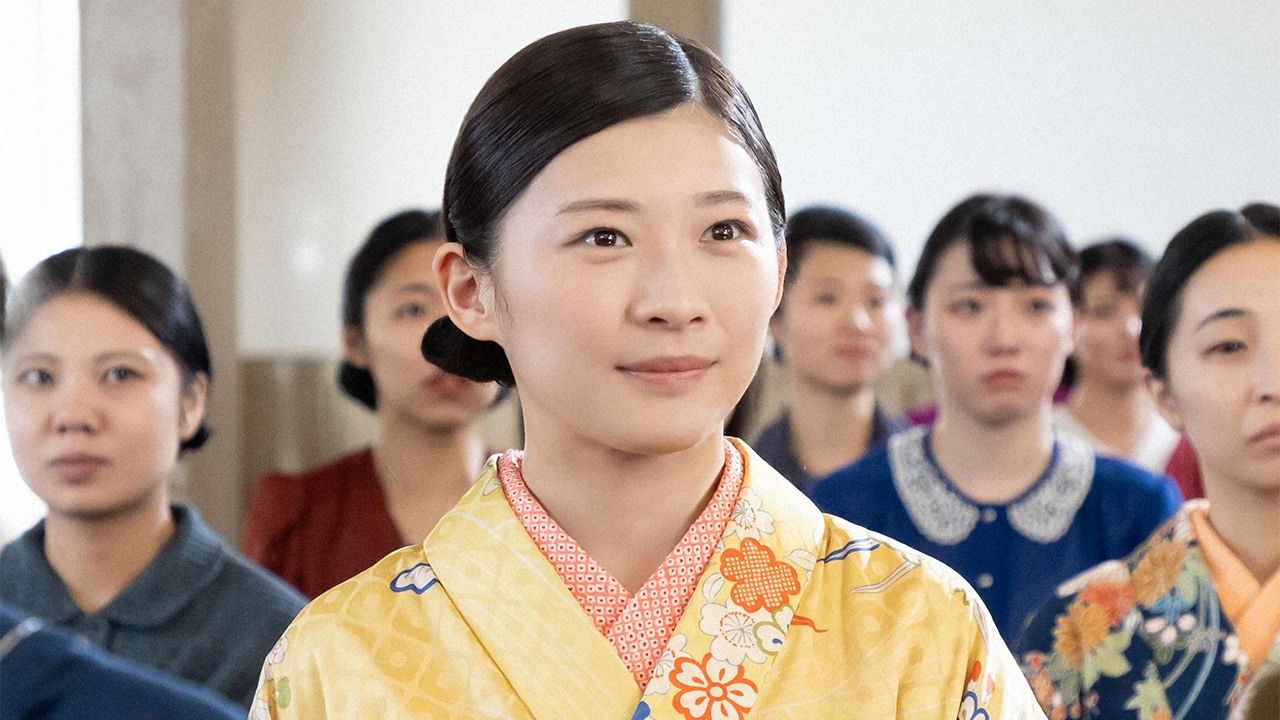
“The Tiger and Her Wings”: NHK Drama Resonates with Viewers Frustrated with Gender Inequality
Culture Entertainment- English
- 日本語
- 简体字
- 繁體字
- Français
- Español
- العربية
- Русский
Fighting Discrimination in the Past and Present
Since 1961, NHK’s daily 15-minute morning dramas (asadora) have featured culturally important stories focusing on the lives of women. The latest installment, The Tiger and Her Wings (Tora ni tsubasa), with its high viewer ratings, is no exception. The serialization combines an excellent script with great actors and skilled direction to produce a story that confronts serious issues while avoiding stiffness due to an abundance of humor.
The Tiger and Her Wings features Inotsume Tomoko—known as “Torako,” or “Tiger Girl,” to her friends, thanks to an alternate reading for the kanji in her given name. Played by Itō Sairi, Tomoko is modeled after the late Mibuchi Yoshiko (1914–84), the first female lawyer in prewar Japan, who also served as a judge after World War II. The story depicts her life course as she confronts discrimination at a time when it was considered natural for even educated women to leave the workforce, marry, and become homemakers.
A key theme for the series is Article 14 of Japan’s postwar constitution, which guarantees equality under the law for all people, irrespective of their race, creed, sex, social status, or family origin. The first episode begins with Tomoko reading the text of Article 14 in the newspaper in 1946, when the new constitution was promulgated.
The tone for the series is set by the animated opening sequence. Tomoko, clad in legal dress, takes center stage as women from various occupations dance together. It conveys a sense of transformation in professions such as medicine, agriculture, and clerical work as Japanese women begin to enjoy equality under the law.
While debate today over whether to revise Japan’s constitution is divided, there are no proposals to reform Article 14. Most Japanese likely accept the basic premise of equality under the law for all. However, the reality is that the aspirations of Article 14 are still not being fulfilled.
For example, the World Economic Forum’s 2023 Global Gender Gap Report ranked Japan 125th out of 146 countries. This is a shameful figure that reflects ongoing political and social negligence. It is therefore poignant that Tomoko, who lived in Japan’s prewar era when people were much worse off than today, is essentially challenging discrimination that is still prevalent in contemporary Japan.
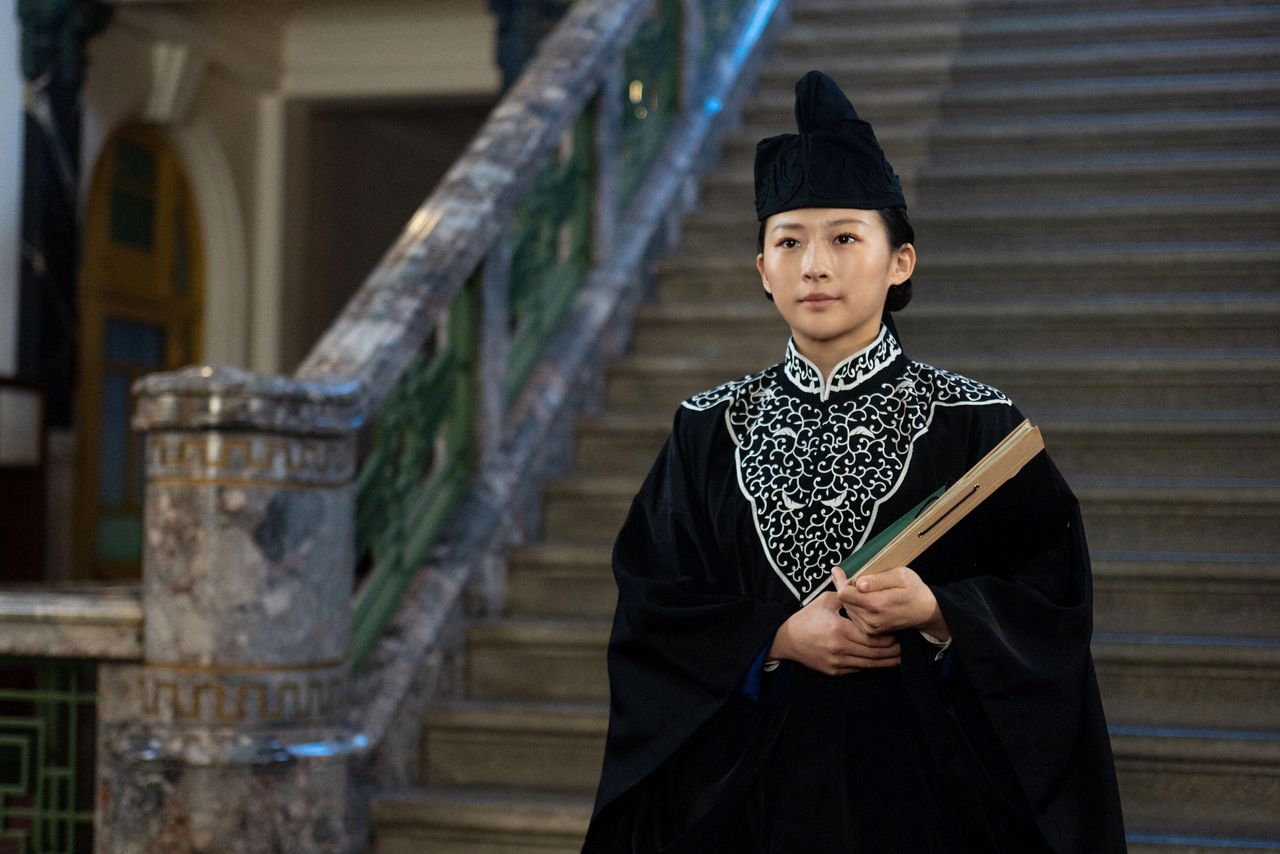
Tomoko (Itō Sairi) in a lawyer’s legal uniform in prewar Japan. Judges, prosecutors, lawyers, and court officials were all required to wear different uniforms in courtrooms. (Courtesy of NHK)
Lead Character’s Anger Resonates with Viewers
Following the end of the war, Tomoko begins work with Civil Law Office in the Ministry of Justice. Given the large number of children whose family members were killed in the war, her main aim is to coordinate the establishment of family courts with various government agencies. With the recent rapid decline in socially conscious dramas, it is impossible for viewers not to be moved by this story.
Before the war, Tomoko’s aspirations were to become a lawyer. In prewar Japan, women were not allowed to become judges or prosecutors, so that was as far as her aspirations would go under the old system. At 20 years old in 1935, Tomoko enters the Faculty of Law at Meiritsu University following her graduation from the university’s Women’s Law Department. There a classmate, Hanaoka Satoru (Iwata Takanori), angers Tomoko when he claims that female students were given special treatment. She retorts, “I never asked for any special treatment. But if you’re saying we’re special, does that mean you dare not look down on us? Can’t you see how arrogant you sound?”
Tomoko’s anger bubbles over on more than one occasion. In 1938, when she passes the extremely difficult higher judicial exam (that would later become the bar exam), Meiritsu holds a banquet to celebrate her success. At the press conference Tomoko becomes very vocal in response to one reporter praising her as one of the most talented “ladies” in Japan: “I would never put myself among the best women just because I passed a difficult exam.”
This was no false modesty. Tomoko was agitated that the reporter did not grasp the inequality surrounding access to education. She knew that there were talented classmates who could not take the exam due to family circumstances. One of her classmates, Yamada Yone, left a particular impression on her. Yone was born a poor farmer and had to fight on her own to get into Meiritsu University. Other women could not receive an education in the first place due to poverty and other reasons.
Tomoko also shows her anger at the hypocrisy surrounding her success: Although women were first allowed to take the higher judicial examination in 1936, they could not become judges or prosecutors even if they passed. Tomoko says, “I sincerely hope that our society will become one where it doesn’t matter whether someone is a man or a woman when there’s a job to be done. Let’s make that happen. I only want to be the best at something in that kind of society. I will strive to be a good lawyer to achieve that, and I will continue to help those in need, no matter their gender!”
Without Article 14, there is likely a considerable minority of people who would support continued inequality even today, including gender discrimination. Tomoko speaks for the viewer’s unspoken frustration with people standing in the way of equality. That is why The Tiger and Her Wings resonates with so many viewers.
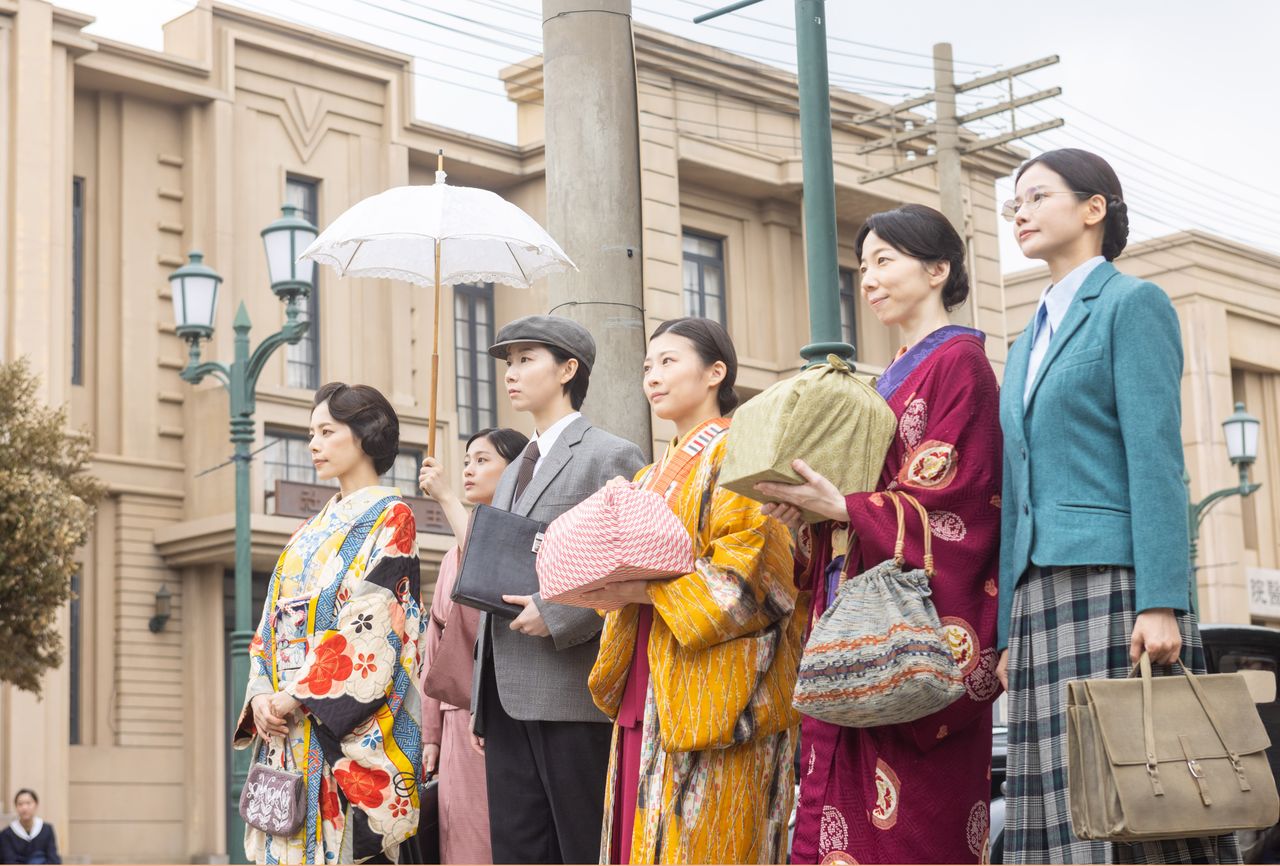
Female graduates of Meiritsu University’s Women’s Law Department about to enter the Faculty of Law. From left to right are Sakuragawa Ryōko (daughter of a noble family) and Tama, her valet; Yamada Yone, a poor farmer dressed as a man; Tomoko, the lead character; Ōba Umeko, a lawyer’s wife and mother of three; and Choi Hyang-suk, a student from Korea. (Courtesy of NHK)
Aiming for a Gender-Balanced Cast
The Tiger and Her Wings is not just a story about women, however. The barriers between Tomoko and male colleagues are also overcome. For example, Hanaoka, initially high-handed toward the female students, eventually undergoes a change. When Hanaoka feels down following his failure to get into his first choice, Tokyo Imperial University, he comes to realize his mistake through his interactions with Tomoko and the other students. He apologizes in particular to Umeko, whom he had hurt with his unkind words. He says, “I didn’t want my peers to look down on me, so I intentionally disrespected the female students. I never thought I would become that sort of person.”
Hanaoka eventually pulls himself together and passes the higher judicial exam and the judges’ exam as well.
The spirit of equality in this drama is undeniable, reflecting NHK’s commitment to gender balance also seen in its participation from 2021 in 50:50: The Equality Project, a program devised by the BBC in 2017. NHK is the only Japanese TV station to have committed itself to the project.
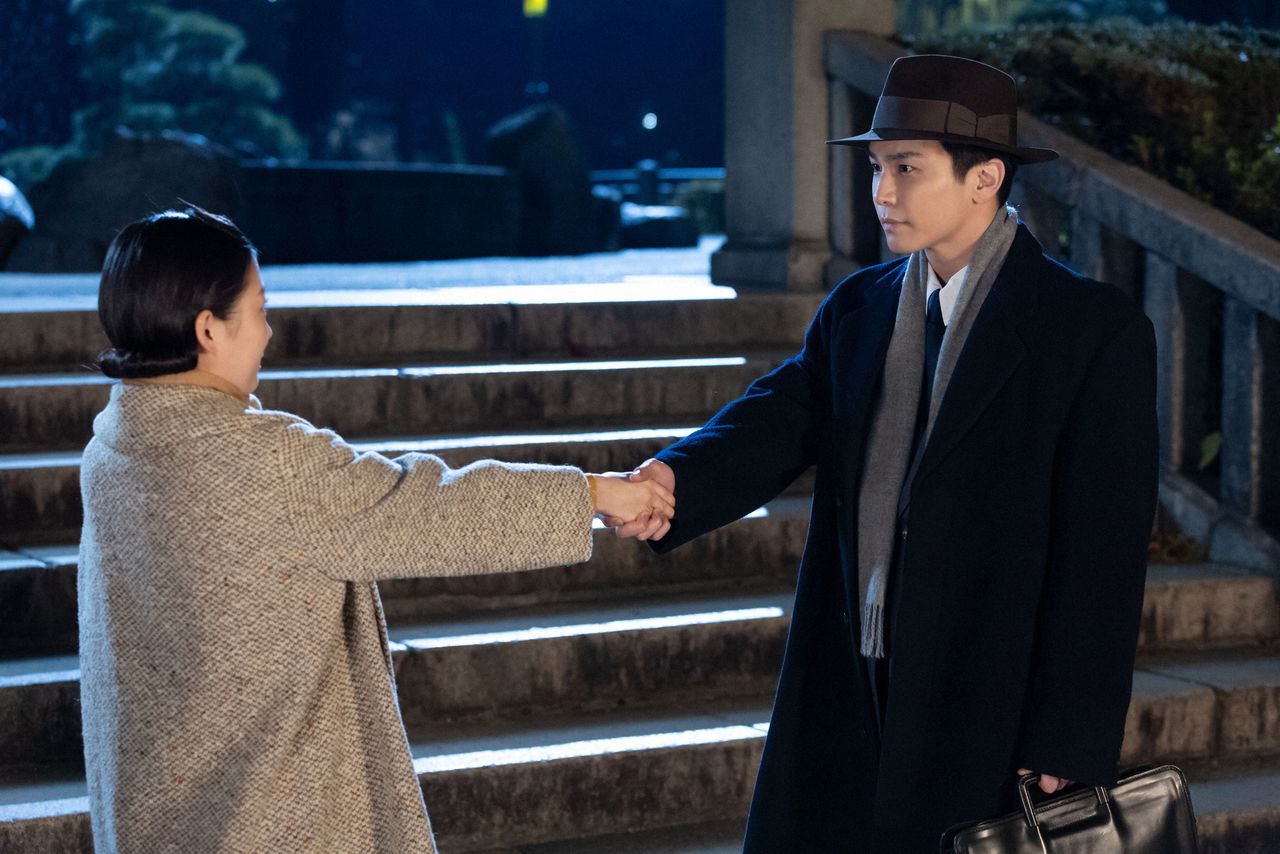
Hanaoka Satoru (right, Iwata Takanori), who is assigned to Saga Prefecture as a judge. While he wants to marry Tomoko, he leaves without telling her his feelings when he hears about her decision to train to become a lawyer. (Courtesy of NHK)
A Historical Masterpiece in the Making?
The script is a wonderful blend of treatments of serious issues and lighter comedic elements. It is extremely difficult to achieve this combination, but the 36-year-old screenwriter Yoshida Erika manages to pull it off. This perhaps should not be a surprise, as Yoshida in 2021 became the youngest ever recipient of the Mukōda Kuniko Award, Japan’s top prize for drama scriptwriting.
Two years ago, when I interviewed Itō Sairi (Tomoko), she interestingly mentioned the late actress Kiki Kirin as someone she admired. Although the two had never performed together, Itō said she could not stop crying when she heard the news of Kiki’s passing in 2018 at age 75.
Itō is young, but like Kiki, she is a skilled actor, with both serious and comedic chops. She is adept at switching facial expressions from a warm smile to gloomy melancholy without any sense of unnaturalness. I believe that only Itō could have played the part of Tomoko.
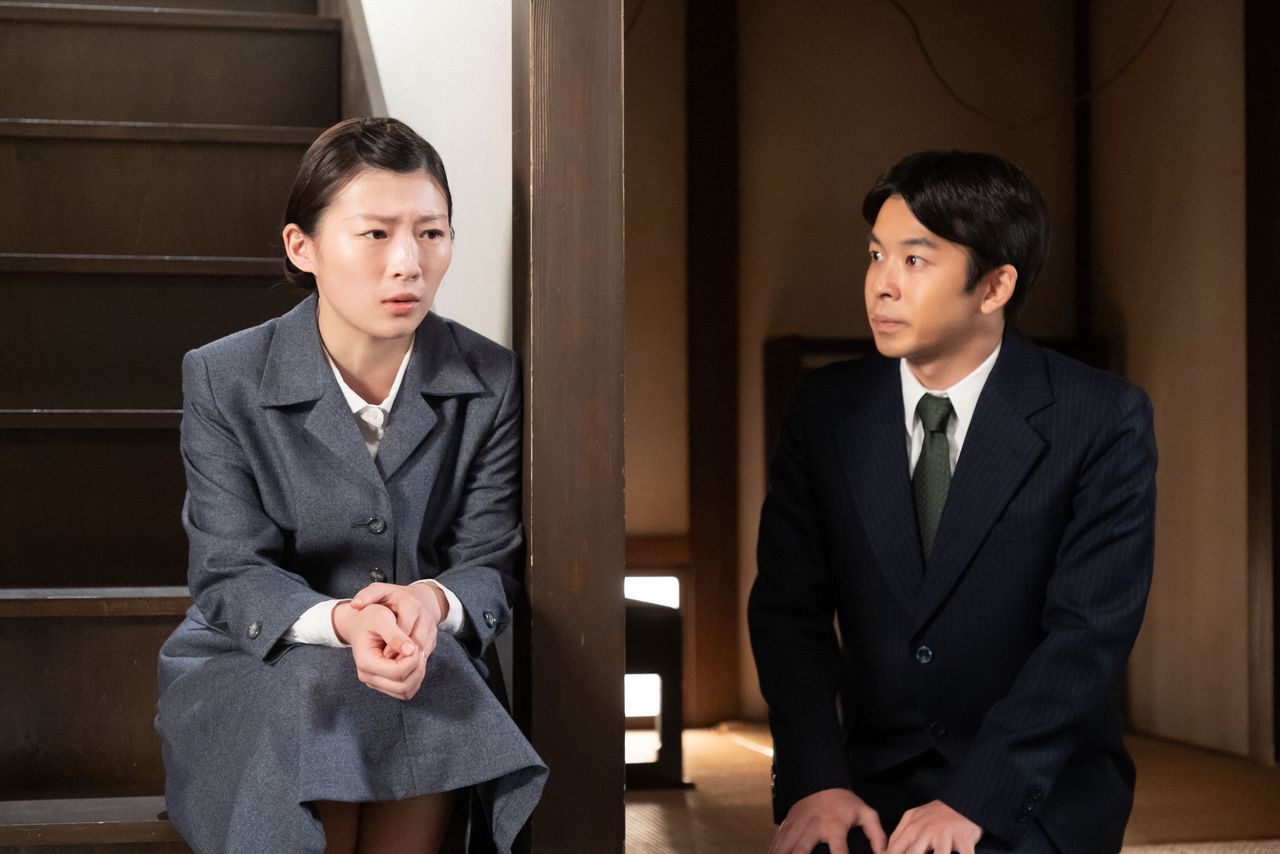
Tomoko becomes a lawyer but does not receive any job offers because she is a woman. In order to gain social status, she struggles to find an arranged marriage partner until she receives an unexpected propose from Sada Yūzō (right, Nakano Taiga), a former lodger of the Inotsume family. (Courtesy of NHK)
Perfect for the Part
The drama is underpinned by the real-life character of Mibuchi Yoshiko, the model for Tomoko’s character. Mibuchi also became a respected figure in Japan following her graduation from the Faculty of Law at Meiji University. Mibuchi was Japan’s first female lawyer and, following World War II, the second female judge.

Mibuchi Yoshiko, the first Japanese woman to sit on the bench, at the time of her appointment as head of the Niigata Family Court. Taken on June 14, 1972. (© Jiji)
In 1949, Mibuchi was appointed as a judge in the civil affairs division of the Tokyo District Court. In 1963 she was involved in a civil suit where victims of the Hiroshima and Nagasaki atomic bombings sought compensation from the government. Although the plaintiffs’ claims were ultimately rejected, Mibuchi was involved in the first legal judgement that the atomic bombings were a violation of international law. Although the influence of the United States on Japan was much stronger then than it is today, the judges did not tolerate any notion that the United States and other major powers should have special treatment. This decision was the catalyst for the government to begin providing relief to A-bomb survivors in earnest.
In 1972, Mibuchi became the director of the Niigata Family Court. At the time she was quoted as saying, “The family court is a place that deals with people, not cases.”
Of the 48 asadora serializations since the year 2000, including last year’s Boogie Woogie, 17 of them have had a model for the main character. It can be difficult, however, to attract viewers if the person is a celebrity but not someone who brings gravitas to the role. Itō Sairi does this perfectly. I have covered the broadcasting industry for over 30 years, and I am convinced that The Tiger and Her Wings will go down as a historical masterpiece.
(Originally published in Japanese. Banner photo: Itō Sairi as Tomoko in the TV series The Tiger and Her Wings [Tora ni tsubasa]. Written by Yoshida Erika, the show is broadcast daily Monday through Friday at 8:00 am. © NHK.)
